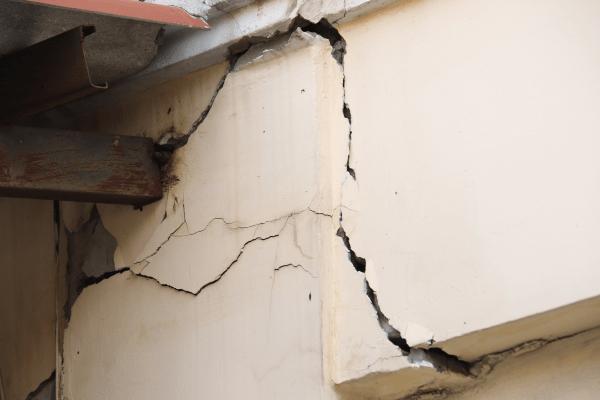Concrete Repair and Restoration | Tips for Improving Concrete Life
Concrete is renowned for its durability and strength which forms the backbone of countless structures worldwide. From bridges to buildings of every size, its worldwide use lighten its importance in modern construction. However, despite its robust nature, concrete is susceptible to wear and tear over time, essential repair and restoration efforts to maintain structural integrity and prolong its lifespan.
In this blog post, we have cover the essential tips for concrete repair and restoration, aiming to empower builders, engineers, and property owners with the knowledge needed to ensure the longevity of their concrete structures.
Understanding Concrete Deterioration

Before delving into repair and restoration techniques, it’s crucial to understand the factors contributing to concrete deterioration. Moreover, you should always consider best concrete repair service for excellent outcomes. Several elements can compromise concrete integrity, including:
Environmental Factors: Exposure to harsh weather conditions such as freeze-thaw cycles, moisture, UV radiation, and chemical exposure can lead to concrete degradation.
Structural Overloading: Excessive loads or inadequate structural design can cause cracks, spalling, and other forms of damage.
Poor Construction Practices: Improper concrete mixing, curing, and placement techniques can result in weak concrete prone to premature deterioration.
Corrosion of Reinforcing Steel: When reinforcing steel within concrete corrodes due to exposure to moisture and oxygen, it can lead to expansive rust, causing concrete to crack and spall.
Tips for Concrete Repair and Restoration
To address concrete deterioration effectively and extend the lifespan of structures, consider implementing the following tips:
Regular Inspections
Conduct routine inspections to identify signs of concrete deterioration promptly. Look for cracks, spalling, discoloration, and other visible damage indicators. Early detection allows for timely intervention, preventing minor issues from escalating into costly repairs.

Proper Surface Preparation
Before undertaking any repair work, ensure thorough surface preparation to remove loose debris, contaminants, and deteriorated concrete. Concrete demolition is different task. Anyways, use mechanical methods such as abrasive blasting or high-pressure water jetting to achieve a clean, sound substrate for repair materials to adhere effectively.
Selecting the Right Repair Materials
Choose repair materials compatible with the existing concrete substrate to ensure optimal bond strength and durability. Options include epoxy resins, polymer-modified cementitious mortars, and specialized repair mortars designed for specific applications such as structural repairs or surface restoration.
Addressing Structural Deficiencies
Prioritize addressing structural deficiencies to maintain the stability and load-bearing capacity of concrete structures. Utilize structural strengthening techniques such as carbon fiber reinforcement, steel plate bonding, or post-tensioning to enhance structural performance and prolong service life.

Implementing Corrosion Mitigation Measures
Combat corrosion of reinforcing steel by implementing corrosion mitigation measures such as cathodic protection systems, corrosion inhibitors, and waterproofing membranes. These measures create a protective barrier against moisture and chloride ingress, reducing the risk of corrosion-induced concrete deterioration.
Application of Protective Coatings
Apply protective coatings such as acrylic sealers, epoxy coatings, or polyurethane membranes to enhance concrete durability and resistance to environmental factors. These coatings provide an additional layer of protection against moisture penetration, chemical exposure, and abrasion, thereby extending the lifespan of concrete structures.
Regular Maintenance
Establish a proactive maintenance program to address minor issues promptly and prevent deterioration from progressing. Perform tasks such as crack sealing, joint repair, and surface resealing at regular intervals to preserve concrete integrity and minimize the need for extensive repairs in the future. If you’ve stamped surface, check these tips to maintain stamped concrete.
Engage Qualified Professionals
When undertaking concrete repair and restoration projects, enlist the services of qualified professionals with expertise in concrete repair techniques and industry best practices. Experienced contractors can assess the extent of damage, recommend appropriate repair strategies, and execute repairs efficiently to ensure optimal results.
FAQs
It’s recommended to conduct inspections annually or after significant environmental events to find out any issues at the initial stage.
It’s essential to select materials compatible with the existing substrate to ensure proper adhesion and durability.
Some regular tasks such as crack sealing, joint repair, and surface resealing help prevent deterioration and prolong concrete lifespan.
Conclusion
Concrete repair and restoration are vital aspects of maintaining the longevity and structural integrity of concrete structures. By implementing these tips for concrete repair and restoration and maintenance practices, utilizing quality repair materials, and addressing underlying structural deficiencies, property owners can effectively extend the lifespan of their concrete assets and properties.






